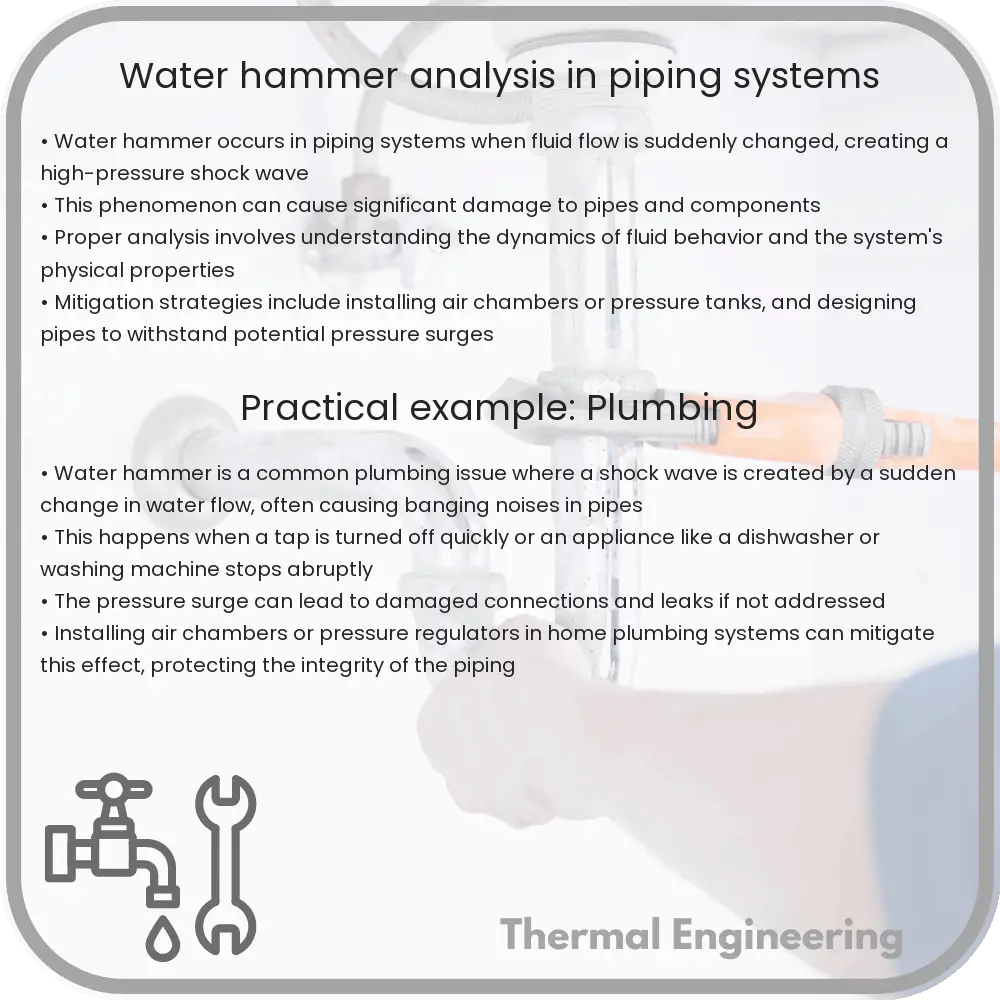Learn about water hammer in piping systems, its causes, analysis with the Joukowsky equation, and effective mitigation strategies.

Understanding Water Hammer in Piping Systems
Water hammer, also known as hydraulic shock, is a common phenomenon in piping systems that can lead to significant challenges, including pipe damage and system failure. This article provides an exploration of what water hammer is, why it occurs, and how it can be analyzed and mitigated in engineering.
What is Water Hammer?
Water hammer occurs when a fluid in motion is forced to stop or change direction suddenly. This typically happens in piping systems when valves close abruptly or pumps shut down too quickly. The kinetic energy of the water needs to go somewhere and is converted into pressure, creating a shock wave that travels through the system. The name ‘water hammer’ derives from the banging or hammering sound that often accompanies this sudden rise in pressure.
Causes of Water Hammer
- Quick-closing valves: Valves that close in less than the time it takes for a pressure wave to travel to the nearest tank or reservoir and back are particularly likely to cause water hammer.
- Sudden pump failure: If a pump stops abruptly due to power failure or other malfunctions, the fluid momentum can generate high pressure and a shock wave.
- Direction changes: Sudden changes in pipe direction, such as elbows or bends, can also initiate water hammer, particularly under high flow velocities.
Mathematical Analysis of Water Hammer
The intensity of water hammer can be calculated using the Joukowsky equation:
ΔP = ρ * a * Δv
- ΔP is the change in pressure
- ρ (rho) is the density of the fluid
- a is the speed of the pressure wave in the pipe
- Δv is the change in the fluid’s velocity
This equation implies that the pressure surge is proportional to the speed of the pressure wave, which depends on the elastic properties of the fluid and the pipe, and the change in velocity of the fluid.
Mitigation Techniques
- Proper pipe design: Designing piping systems to minimize abrupt changes in direction and ensuring pipes are the correct diameter can help reduce the risk of water hammer.
- Air chambers or pressure tanks: Installing these can absorb the shock wave generated by halted fluid momentum, lowering the impact of water hammer.
- Slow-closing valves: Using valves that take longer to close can give the fluid more time to decelerate naturally, reducing the risk of shock waves.
- Surge tanks: Surge tanks are effective in mitigating water hammer by providing a buffer zone where pressure can be normalized.
Conclusion
Water hammer is a significant issue in piping systems that can lead to damage and failure. By understanding the causes and employing effective mitigation techniques, engineers can design safer and more reliable systems. Analyzing water hammer through models and equations like the Joukowsky equation also allows for precise predictions and better system planning.